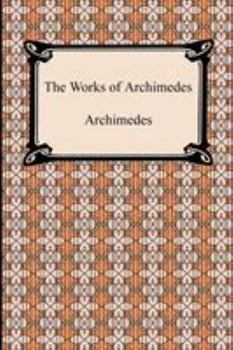The Works of Archimedes
Select Format
Select Condition 
Book Overview
Archimedes of Syracuse, revered as antiquity's great geometer, produced a vast collection of works in geometry, arithmetic, and mechanics which has proved to be a source of timeless fascination for modern mathematicians, physicists, science historians and logicians. Although credited with the invention of practical devices like the water-screw, catapults and grappling devices, compound pulley systems, and a model for explaining solar eclipses, Archimedes...
Customer Reviews
A responese to the review by "Muhammad The Egyptian"
maybe more than one point of view is possible
Brilliant (but mostly not so _newly_ known)
The Works of Archimedes Mentions in Our Blog

Celebrate #NationalPiDay with 3.14 pieces of your favorite pie (à la mode, according to our recent poll), 3.14 slices of your favorite pizza (pie), 3.14 chapters of The Life of Pi, or by seeing how many decimal digits of Pi (π) you can memorize and say aloud. (FYI, there are over a trillion, so hydrate first.)




